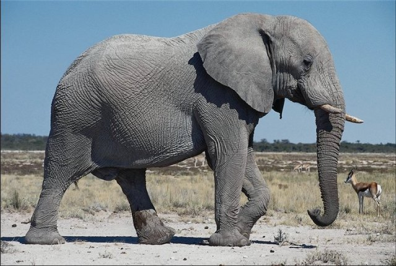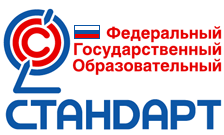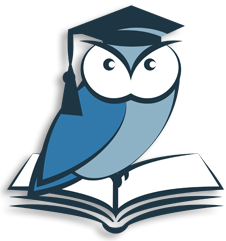| 1.Организационный момент, мотивация к учебной деятельности
| Приветствие. Вступительное слово. Приветственное слово учителя: T- Good day, boys and girls! I’m very glad to see you today at our lesson. T- I hope you are well. Look out side. It’s warm and beautiful day today, isn’t it? Please sit down. So, let’s start.
Откройте тетради, запишите число. | Приветствие учителя. Наличие письменных принадлежностей, тетради, учебника, дневника. Размещают учебные материалы на рабочем месте, демонстрируют готовность к уроку.
| Принцип психологической комфортности. УУД: личностные, коммуникативные. Цель – создание доброжелательной атмосферы, мотивация на учёбу, создание ситуации успеха. |
| 3. Определение темы урока, постановка целей урока.
4. Целеполагание. | T- Now I want you to say the topic of our lesson. Please, look at the board. Do you see the words? Can you read them? (слайд №1). Make up the sentence and it’ll be the topic of our lesson. (Дети читают слова с экрана): animals, life, our, in=Animals in our life. (слайд №2)
T- I wonder, what do you think we are going to do during our lesson? Please, your opinions. We’ll read, talk, listen to and write. . Of course, we do it every our lesson. But this lesson is just a bit unusual.
| (Учащиеся читают слова и определяют название урока): animals, life, our, in=Animals in our life. Записывают тему урока.
ЦЕЛЬ: Обдумывают ответы на вопросы, смотрят презентацию; воспринимают на слух информацию. | Личностные: осознают свои трудности и стремятся к их преодолению. Регулятивные: осознают недостаточность своих знаний. Коммуникативные: задают вопросы с целью получения необходимой для решения проблемы информации. |
| 5. Фонетическая зарядка. | II. Фонетическая зарядка. (слайд №3) T- First of all, I’d like you to revise some sounds and how we pronounce them. Be attentive, repeat after me. [æ] cat, habit, panda, catch, camel, animal [ai] rhino, kind, wild, right, fight [з:] bird, world, word, work [ei] cage, endangered, save, brave [o] watchdog, join, protect, frog T- Well done. Thank you. | Учащиеся повторяют звуки за учителем, закрепляя фонетическое правило.
Если мы неправильно произнесем хоть один звук, то меняется целое слово, меняется значение целого предложения.
|
|
| 6. Речевая зарядка.
| T- Now, I’d like you to open your students book on page 55 ex33. Let's listen to the poem ''My dream'' by Gillian Brown and try to answer some of my questions. (слайд №4) My Dream I love all kinds of animals Dogs and cats and rabbits. I love all kinds of animals, Despite their little habits. If I had tons of money, D’you know what I would do? I would buy lots of animals And have my own zoo. But they wouldn’t be in cages, They would be free to run around. And there’s one thing they would feel And that is safe and sound.
T:-What is this poem about? - Do you like this poem? -What would you do if you had tons of money? -Do you like animals? -Do you have any pet at home? | Обучающиеся слушают запись запоминая слова и звуки, затем читают в слух. Отвечают на вопросы учителя. |
|
| 7. Практическая деятельность и первичное закрепление.
| 1. T- Today we’ll speak a lot about animals. First of all, let’s remember what types of animals there are. Animals can live not far from the people. We call them “Domestic animals”(слайд №5) Animals can live in the forest, in the Zoo. We call them “Wild animals”(слайд№6) -Now, let’s remember where animals can live. 2. T- Well done. It’s high time write a sinquein. (синквеин на экране слайд №7) 
1. What animal is it? 2. Describe the animal using two adjectives. 3. What this animal can do? 4. Your personal attitude to this animal. 5. One noun to express your feelings to this animal. List of the adjectives: cunning; clever; domestic; funny; kind; brave; big; full of fun; friendly; cruel; stupid; strong; independent; hard-working; angry; wild (описание по картинкам) (На доске появляются картинки животных, учащиеся должны описать этих животных с помощью прилагательных) Example: A bear is strong, big and brave. The bear is a wild animal. It lives in the forest. 3.T- We like to compare the people with the animals. It is very interesting. If the man is brave we say “ храбр как лев” The English people say “as brave as a lion”. (См рисунок ) If the man is very busy the Russian people say “вертится как белка в колесе” and the English people say "as busy as a bee" (трудолюбивый как пчела). (См рисунок ) Who is brave in your group? (as brave as a lion) Are you brave? Who is busy? As busy as a bee? | (Учащиеся выбирают картинки с животными и соотносят с заданием.)
Формулируют учебную деятельность в диалоге с учителем; высказывают собственные мысли; обосновывают свою точку зрения.
Устанавливают причинно-следственные связи между отдельными языковыми явлениями. Формулируют собственные мысли, высказывают и обосновывают свою точку зрения.
| Принцип деятельности. УУД: коммуникативные, познавательные, регулятивные(развитие внимания учащихся, монологической речи; создание благоприятной атмосферы заинтересованности; работа над формированием логических умений: анализ, сравнение, обобщение, построение цепочек рассуждений). УУД: регулятивные.
|
| 8. Практическая деятельность и закрепление с комментированием.
9. Самостоятельная работа с самопроверкой. Активизация навыков чтения.
10. ФИЗ.МИНУТКА
11. Выполнение упражнения в форме монологического высказывания.
12. Выполнение упражнения | T -Now, dear boys and girls. Let’s do the breaking storm exercise. I have the riddles for you. Try to guess. This animal is very big. It is grey and sometimes white. It likes to eat leaves and grass. It has a very long nose. In lives in India and Africa. (an elephant) This animal can run, but can’t fly. It is very clever and friendly. It lives at home or in the street. It’s a man’s friend. (a dog) This animal isn’t big. It lives in the river or near the water. It can jump and swim, but it can’t run. It is green. (a frog) Gena is not a boy. It is big, long and green. It is very clever. It can swim. It has a friend Cheburashka. (a crocodile) It can run, jump and walk. It is grey. It lives in the house. It is very small. It likes bread and cheese. (a mouse) This animal can be black, grey, white and red. In lives in the house. It can catch a grey mouse. It likes fish, meat and milk. It can run, jump. (a cat). He is brave and strong. He lives in the jungle with animals. He is the good friend of animals. They love him very much. (Mowgli) T- Now, I want you to make up your own riddles, I’ll give you two minutes. (сильные составляют свою загадку, а слабые получают задание). T- The time is up. Let’s listen to you. Thank you very much, well done.
T- 1) Now, it’s high time to read the text about the animals and find out the necessary information. I’ll give you sheet of papers with the text. You should read it by yourself. I’ll give you 3 minutes. But, first of all, look at the screen, here you can see some words and word combinations. “The world without animals” Imagine a world without animals. It’s difficult, but each day takes us closer to such a world. There are plenty of endangered animals all over the world. Nowadays, due to national wildlife parks, zoos and aquariums people have managed to save some endangered animals.
But there are many things a person can do every day to help save the lives of endangered and rare animals. One of the most important thing we can do is to protect their natural habitats. Cutting down trees is very harmful for wildlife. So plant trees and flowers and put bird houses and feeders all around your home. This will attract native birds, animals, and insects. Another really important way to help is to join an organization which tries to save endangered animals. There you can see learn new ways to help animals.
1. T- Your time is up. Be ready to answer some of my questions. 1) What role do animals play in our life? 2) What do animals give for people? 3) Where can we see animals? 4) Should people take care of animals? 5) What are people trying to do for animals? 6) How can we help them? T:-Thank you for your answers. The next task for you. 2. Find the English equivalents to the Russian phrases: 1) без животных 2) редкие животные 3) естественная среда обитания 4) вредный 5) спасать животных, которые находятся под угрозой вымирания 6) важный способ 7) пытаться спасти 3. Find the Russian equivalents to the English phrases: 1) to be friendly with… 2) to feel responsible for… 3) to be friends for… 4) to kill 5) very harmful for wildlife ….. 6) to join an organization ….. 7) new way to help ….. (слайд 13-14) T- Good! I think you are just a bit tired, let’s have a rest. Please, stand up! Hands up! Clap, clap, clap! Hands on the hips! Step, step, step! Bend your left, Bend your right, Turn yourself around. Hands up! Hands down! Hands at the sides and sit down!
T- So, let’s go on to talk about animals. I think, you will be agree with me, that we can’t live without animals. Now my question is: Have you got any pets at home? Can you tell us about it? And we can’t imagine the world without wild animals. I know, you have prepared some information about wild animals.
T- Thank you very much, my dear friends, for your active work. And now, we’ll do the last task. We also want to help our animals, don’t we? Let’s make the rules for people which is called «The Code of Rules». We’ll try to define what we SHOULD DO and what we SHOULDN’T DO with Animals. Let’s divide into two coloums: in the first group find what we SHOULD DO and the second group find we SHOULDN’T DO. На доске плакат, у каждой группы карточки с фразами. Cards: to be friendly with animals; to feel responsible for animals; to be friends for animals; to kill animals; to hurt animals; to harm animals; to fight for endangered animals; to save animals from the death; feed animals and birds; help animals; frighten animals; save animals; love animals; take care of animals (слайд 9) | Отгадывают загадки, составляют свои собственные загадки.
Учащиеся читают текст, находят необходимую информацию, выполняют задания по тексту и отвечают на вопросы учителя.
ФИЗ.МИНУТКА
Учащиеся рассказывают о своих домашних питомцах, показывают презентации о диких животных.
Учащиеся составляют свод правил «The Code of Rules», что следует делать, что не следует делать по отношению к животным. | Принцип деятельности, непрерывности, вариативности, творчества. УУД: познавательные (опирается на уже известное); коммуникативные (учит способам взаимодействия, сотрудничества). |
| 13.Рефлексия деятельности.
| T- Well done, my dear friends! It’s high time for me to know what we have done today? What have you known today? Are you ready to help animals? Do you like our lesson? - Ребята, наш урок подходит к концу и нам пора покидать эту интересную тему. И я обещаю вам, что мы не раз еще сюда вернемся. - Вам понравился наш урок?
- Что нового вы из него узнали, с чем познакомились? - О чем мы говорили на сегодняшнем уроке? - Вспомним цели нашего урока. Достигли ли мы их? -Что особенно понравилось на уроке? |
| УУД: познавательные, регулятивные ЦЕЛЬ: Обобщить, сделать выводы. |



















